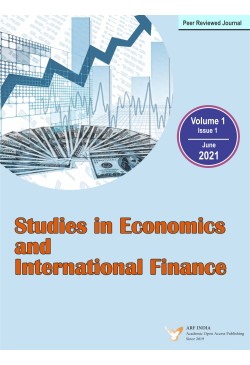In this study, we highlight the importance of labor force and labor productivity as two key determinants of nations’ sovereign risks, and in particular for emerging markets. These vibrant macroeconomic factors have received little attention in the literature of sovereign risk. To remedy that, we (1) formalize an intuitive approach for measuring creditworthiness of countries based on the progression of maximum borrowing capacity with several explanatory variables, among them labor force and labor productivity, (2) track the advancement of sovereign debt, and (3) envisage the intersection point of the two pathways as an incident of sovereign default. We motivate our endeavor, provide an extensive review of the relevant literature, develop and justify our sovereign risk universal framework, illustrate our scheme with a contemporary case of sovereign default in Greece, conclude, and suggest further avenues of exploration.
Keywords: Sovereign Risk; Labor Force; Labor Productivity; Borrowing Capacity; Emerging Markets; Sovereign Debt.
JEL Classifications: E24, J21, H63, O50
Dror Parnes (2023). Measuring Sovereign Risk with Labor Force and Labor Productivity: Application to Emerging Markets. Studies in Economics & International Finance, Vol. 3, No. 2, pp. 171-196.
https://DOI: 10.47509/
SEIF.2023.v03i02.04
